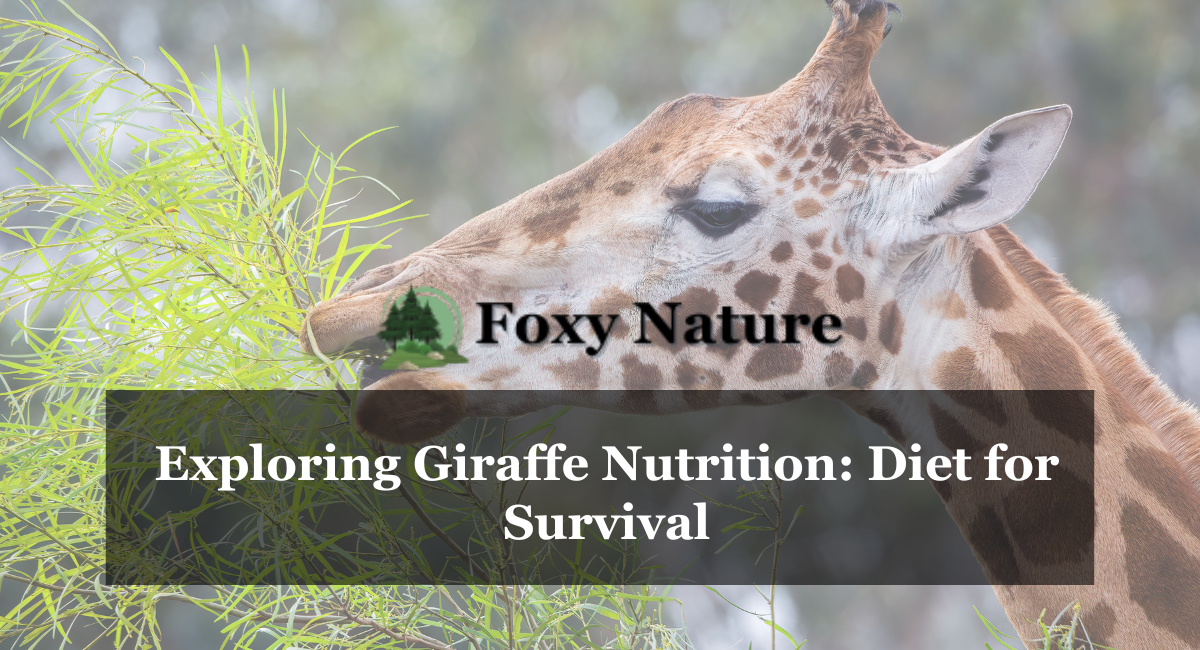Giraffes, the towering icons of the African savanna, evoke a sense of wonder with their graceful stature and gentle demeanor.
Amidst the vast wilderness they call home, one question frequently arises: What do giraffes eat to sustain their impressive size and strength?
In this blog, we embark on a journey into the dietary habits of these majestic creatures, unraveling the secrets of their survival in the wild.
Understanding Giraffe Dietary Preferences
As herbivores, giraffes rely solely on plant-based foods to meet their nutritional needs. Their diet primarily consists of leaves, seeds, buds, and occasionally fruits and vegetables.
A typical giraffe consumes approximately 75 pounds of food each day, making them formidable eaters capable of devouring vast quantities of vegetation to fuel their bodies.
Acacia Leaves: A Giraffe Favorite
Acacia leaves rank among the preferred foods of giraffes, despite the thorny nature of these trees.
With their long tongues and thick saliva, giraffes adeptly navigate the thorns to access the nutritious leaves, demonstrating their remarkable adaptability in acquiring food.
The seasonal flowers of acacia trees provide an additional source of protein, enhancing the nutritional value of the giraffe’s diet.
Gender Differences in Dietary Preferences
Researchers have observed distinct differences in the dietary preferences of male and female giraffes.
Female giraffes tend to favor more nutritious herbs, while males consume a diet higher in fiber.
This divergence suggests that female giraffes prioritize maintaining their health and vitality, even in the face of scarcity, by selecting the most nutrient-rich foods available to them.
Browsing vs. Grazing: A Giraffe’s Feeding Behavior
Giraffes are primarily browsers, meaning they prefer to feed on the leaves and branches of tall trees rather than grazing on grass and small plants.
Their towering height affords them a unique advantage, allowing them to reach the uppermost leaves of trees that other herbivores cannot access.
This browsing behavior enables giraffes to capitalize on a rich source of nutrients while minimizing competition with other animals for food.
The Art of Bone Chewing: Osteophagy in Giraffes
In addition to their plant-based diet, giraffes occasionally engage in a curious behavior known as osteophagy – the chewing of bones.
Giraffes chew on bones to supplement their diet with essential minerals and nutrients, ensuring optimal health and well-being.
This fascinating behavior underscores the giraffe’s resourcefulness in meeting its nutritional needs in the wild.
Sources of Food for Giraffes in the Wild
In their natural habitat, giraffes primarily feed on the leaves and buds of trees and shrubs, with acacia trees being a favored source of food.
While giraffes may consume grass and herbs on occasion, these foods constitute a small portion of their diet compared to the abundant foliage available to them in the treetops.
Giraffe Feeding Habits in Zoos
In captive environments such as zoos, giraffes are provided with a varied diet that may include fruits such as bananas, in addition to their staple foods of leaves and branches.
While zoos strive to replicate the giraffe’s natural diet as closely as possible, the availability of different food items allows for dietary diversity and enrichment for these magnificent creatures.
Conclusion
In conclusion, giraffes possess a remarkable ability to thrive on a plant-based diet, utilizing their unique adaptations to forage for food in their natural habitat.
From the towering acacia trees to the seasonal flowers and fruits that dot the landscape, giraffes have evolved to capitalize on a diverse array of food sources to sustain their impressive size and strength.
By unraveling the mysteries of the giraffe diet, we gain a deeper appreciation for these magnificent creatures and the intricate web of life that sustains them in the wild.
